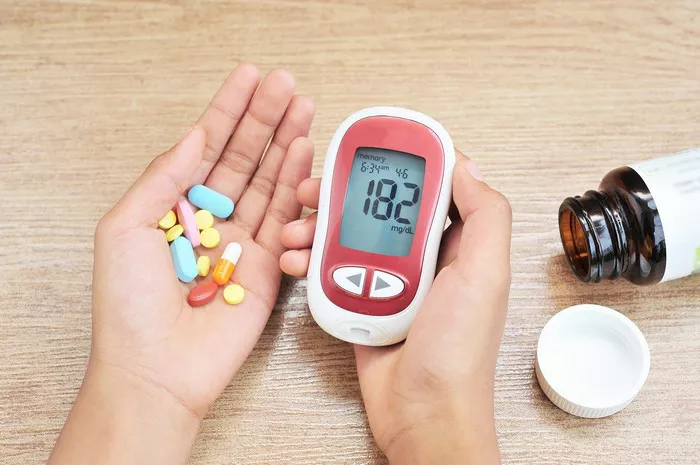Blood sugar, or glucose, serves as a primary source of energy for the body’s cells, and its levels are tightly regulated through a complex interplay of hormones and physiological processes. When you consume food, particularly carbohydrates, your body breaks them down into glucose, which enters the bloodstream. In response, the pancreas releases insulin, a hormone that helps transport glucose from the bloodstream into cells for energy or storage. Conversely, when blood sugar levels drop, the pancreas secretes glucagon, signaling the liver to release stored glucose into the bloodstream to maintain optimal levels.
Maintaining blood sugar within a healthy range is crucial for overall health and well-being. Consistently high blood sugar levels, as seen in conditions like diabetes, can lead to serious complications such as cardiovascular disease, nerve damage, and kidney problems. Conversely, low blood sugar levels can cause symptoms like fatigue, dizziness, and confusion, potentially leading to more severe outcomes if left untreated.
List of Foods That Lower Blood Sugar
Incorporating certain foods into your diet can help stabilize blood sugar levels and promote overall health. Here is a comprehensive list of foods known to have blood sugar-lowering properties:
Broccoli: This cruciferous vegetable is rich in fiber, vitamins, and minerals, including chromium, which may enhance insulin sensitivity and help regulate blood sugar levels.
Seafood: Fatty fish like salmon, mackerel, and sardines are excellent sources of omega-3 fatty acids, which have been linked to improved insulin sensitivity and reduced inflammation.
Pumpkin: Low in calories and high in fiber, pumpkin is also packed with antioxidants like beta-carotene, which may help lower blood sugar levels and improve insulin resistance.
Leafy Greens: Vegetables such as spinach, kale, and Swiss chard are low in carbohydrates and calories but high in fiber and nutrients, making them ideal choices for blood sugar management.
Nuts and Seeds: Almonds, walnuts, chia seeds, and flaxseeds are rich in fiber, healthy fats, and protein, all of which can help stabilize blood sugar levels and promote satiety.
Whole Grains: Opt for whole grains like oats, quinoa, and barley, which contain fiber and nutrients that slow down the absorption of glucose and prevent spikes in blood sugar.
Legumes: Beans, lentils, and chickpeas are excellent sources of protein and fiber, which can help regulate blood sugar levels and improve insulin sensitivity.
Cinnamon: Studies suggest that cinnamon may help lower blood sugar levels by improving insulin sensitivity and reducing insulin resistance. Sprinkle it on oatmeal, yogurt, or smoothies for a flavorful boost.
Apple Cider Vinegar: Incorporating apple cider vinegar into your diet may improve insulin sensitivity and lower fasting blood sugar levels. Dilute it in water or use it as a salad dressing.
Berries: Blueberries, strawberries, and raspberries are rich in antioxidants and fiber, which can help lower blood sugar levels and improve insulin sensitivity.
Nutritional Information
The nutritional components of these foods play a significant role in blood sugar management:
Fiber: Many of the foods listed above are rich in fiber, which slows down the digestion and absorption of carbohydrates, preventing rapid spikes in blood sugar levels. Fiber also promotes satiety, reducing the likelihood of overeating.
Healthy Fats: Foods like seafood, nuts, and seeds contain healthy fats, such as omega-3 fatty acids, which have been shown to improve insulin sensitivity and reduce inflammation, contributing to better blood sugar control.
Protein: Legumes, nuts, seeds, and seafood are excellent sources of protein, which helps stabilize blood sugar levels by slowing down the absorption of glucose and promoting feelings of fullness.
Antioxidants: Berries, leafy greens, and pumpkin are rich in antioxidants, which help reduce inflammation and oxidative stress in the body, potentially improving insulin sensitivity and blood sugar regulation.
Glycemic Index (GI)
The glycemic index (GI) is a scale that ranks carbohydrate-containing foods based on their effect on blood sugar levels. Foods with a low GI are digested and absorbed more slowly, resulting in gradual increases in blood sugar levels and better overall blood sugar control. Incorporating low-GI foods into your diet can help prevent spikes and crashes in blood sugar levels, promoting stable energy levels and reducing the risk of diabetes-related complications.
Practical Tips:
Meal Planning: Plan meals that incorporate a balance of carbohydrates, protein, and healthy fats from the foods listed above to help stabilize blood sugar levels throughout the day.
Healthy Cooking Methods: Opt for cooking methods such as steaming, baking, or grilling instead of frying to minimize added fats and calories.
Portion Control: Pay attention to portion sizes to avoid overeating, which can lead to spikes in blood sugar levels. Use measuring cups or visual cues to estimate appropriate portion sizes.
Snack Wisely: Choose nutrient-dense snacks like raw vegetables with hummus, Greek yogurt with berries, or a handful of nuts and seeds to keep blood sugar levels stable between meals.
Stay Hydrated: Drink plenty of water throughout the day, as dehydration can affect blood sugar levels and overall health.
Scientific Evidence
Numerous scientific studies support the inclusion of the aforementioned foods for blood sugar management:
A study published in the journal Nutrients found that increasing consumption of cruciferous vegetables like broccoli was associated with improved insulin sensitivity and reduced risk of type 2 diabetes.
Research published in the American Journal of Clinical Nutrition demonstrated that omega-3 fatty acids from seafood were inversely associated with fasting insulin levels and insulin resistance.
A meta-analysis published in the Journal of the Academy of Nutrition and Dietetics concluded that cinnamon supplementation significantly reduced fasting blood sugar levels and improved markers of insulin sensitivity in individuals with diabetes.
Lifestyle Considerations
In addition to diet, other lifestyle factors can affect blood sugar levels:
Physical Activity: Regular exercise helps improve insulin sensitivity, lower blood sugar levels, and maintain a healthy weight. Aim for at least 150 minutes of moderate-intensity aerobic activity per week, along with muscle-strengthening activities on two or more days per week.
Stress Management: Chronic stress can contribute to elevated blood sugar levels through the release of stress hormones like cortisol. Practice stress-reduction techniques such as deep breathing, meditation, yoga, or spending time in nature to promote relaxation and improve blood sugar control.
Medical Advice Disclaimer
It is important to consult with healthcare professionals before making significant changes to your diet, especially if you have diabetes or other health conditions. Your healthcare provider can offer personalized recommendations based on your individual health status, dietary preferences, and lifestyle factors.
Conclusion
In conclusion, incorporating a variety of nutrient-dense foods into your diet, such as broccoli, seafood, and pumpkin, can help lower blood sugar levels and promote overall health. By focusing on whole foods that are rich in fiber, healthy fats, and antioxidants, along with adopting healthy lifestyle habits, you can better manage your blood sugar and reduce the risk of diabetes-related complications.
























